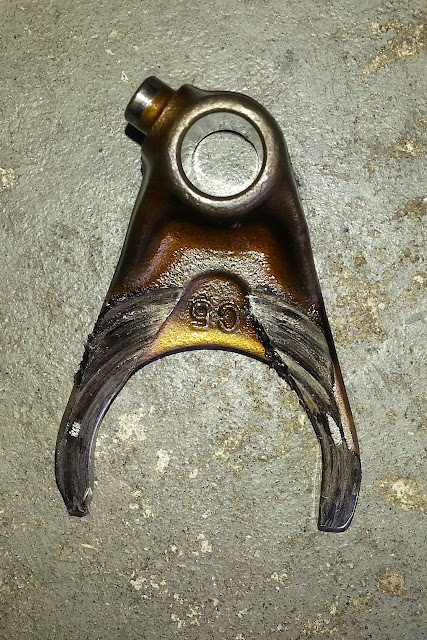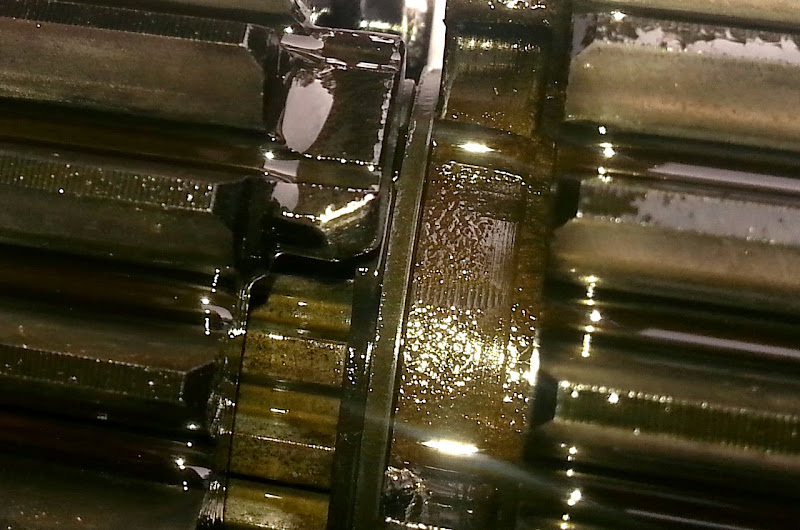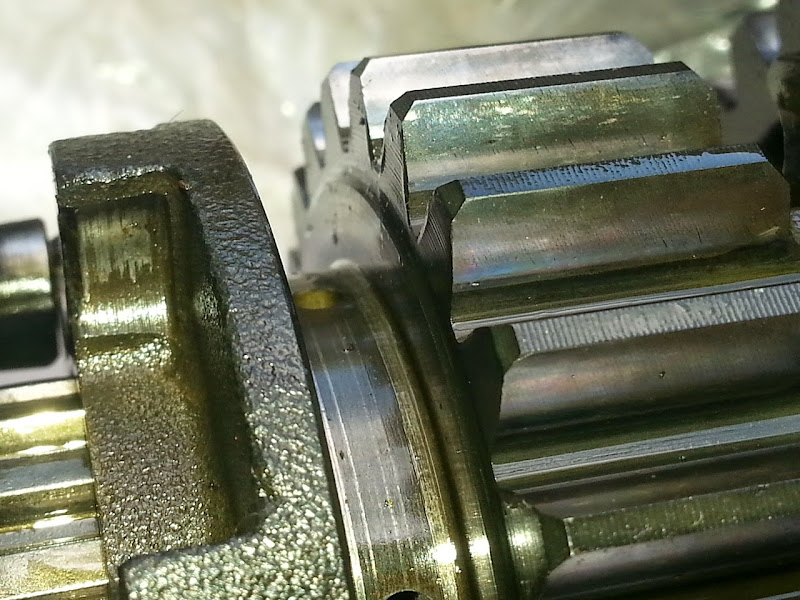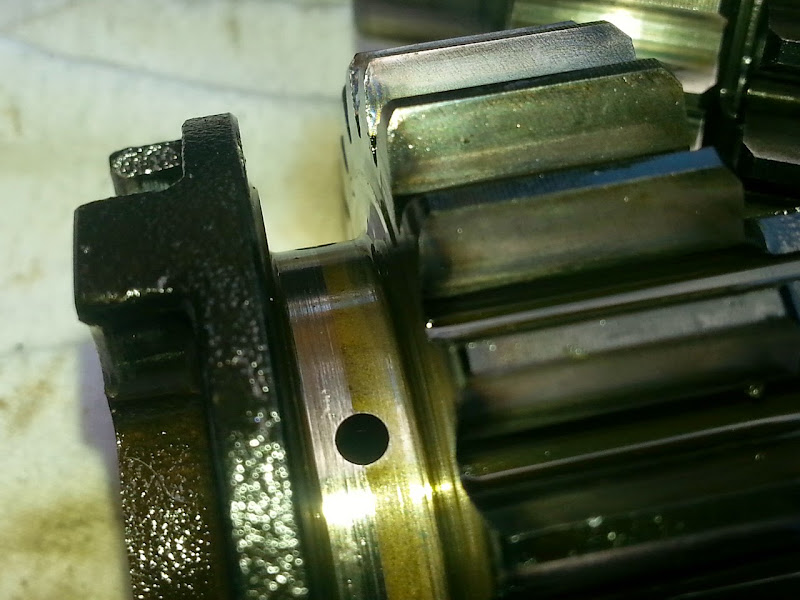wfooshee
O, Woe is me!!
Preloading the shifter is a Bad Thing, as it forces a shift fork against the gear it's about to move. The gear is spinning at a speed depending on road speed or engine speed, depending on which side of the ratio is splined to which axle, and of course the shift fork is NOT a rotating part.
Wear on the shift fork cause the shift to not engage as deeply, which can wear the dogs into an angle, which pushes the gear wheel into the shift fork, which then wears further, which makes the shifts even less fully engaged, which wears the dogs........ ad infinitum.
I don't pre-load the shifter under any circumstances, but my bike was used, with 41,000 on the clock when I bought it, and while the original owner is a talented rider, I can't speak for his transmission habits.
Worn shift fork from my 4th gear experience last summer:

Corners worn off the dogs of 4th gear. When 4th was selected, it rode that angle rather than a flat surface, which produced a sideways force pushing the wheel back into the fork. The wear started as the fork wore, reducing the engagement distance achieved when selecting 4th.

Ridge in the channel the shift fork rides, on the new 4th gear:

Lack of ridge on my 4th gear:

Wear on the shift fork cause the shift to not engage as deeply, which can wear the dogs into an angle, which pushes the gear wheel into the shift fork, which then wears further, which makes the shifts even less fully engaged, which wears the dogs........ ad infinitum.
I don't pre-load the shifter under any circumstances, but my bike was used, with 41,000 on the clock when I bought it, and while the original owner is a talented rider, I can't speak for his transmission habits.
Worn shift fork from my 4th gear experience last summer:

Corners worn off the dogs of 4th gear. When 4th was selected, it rode that angle rather than a flat surface, which produced a sideways force pushing the wheel back into the fork. The wear started as the fork wore, reducing the engagement distance achieved when selecting 4th.

Ridge in the channel the shift fork rides, on the new 4th gear:

Lack of ridge on my 4th gear:

Last edited by a moderator:



